Tips for the Best Authentic Italian Bolognese Sauce
Bolognese is a rich, super flavorful and delicious meat sauce named after the city that it originated in—Bologna, Italy. It’s traditionally served over pasta or in lasagna. If you haven’t tried Italian Bolognese sauce yet, you’ve got to try this recipe!
When it comes to making the best quality Bolognese sauce, that starts with the quality of the ingredients. We’ll take you through the key ingredients used in making Bolognese and point out where you can save time or money, and where it’s worth it to splurge to end up with a restaurant-quality meal.
If you want to try out this Bolognese recipe, it may be worth a trip to check out your local Italian grocer. But the majority of these ingredients are actually readily available at whatever supermarket you typically shop at.
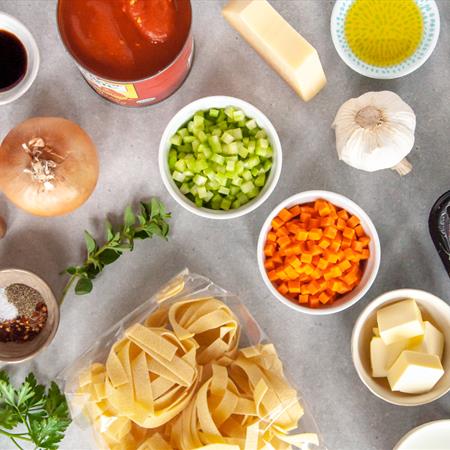
Ingredients
Celery & Carrot:
These vegetables, along with onion make mirepoix in France or soffritto in Italian cuisine. Using celery and carrots, in particular, adds a trademark flavor to Bolognese sauce compared to many other ragu recipes. We recommend peeling both of them for the best texture. Celery can be quite stringy, so peeling the outer layer is beneficial.
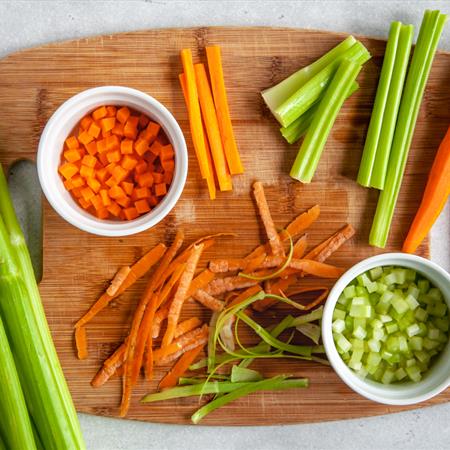
Ground Beef & Pork:
When it comes to ground beef, our recipe calls for lean ground chuck, if possible. Many ground beef products don’t specify what cut the meat comes from, but higher quality ground beef will usually mention this on the label. We chose to use lean ground beef along with ground pork, since the pork adds more fat to the mix. Italian sausage is great for the added seasoning, but regular ground pork works just as well.
Nutmeg:
When’s the last time you checked the expiration dates in your spice cabinet? Spices lose their flavor and quality over time. Spices are usually safe to eat past their expiration, but will lose most of their flavor. And when it comes to optimal flavor of spices, your best choice is to use freshly grated. Freshly grated nutmeg is so much more aromatic and flavorful than buying pre-ground!
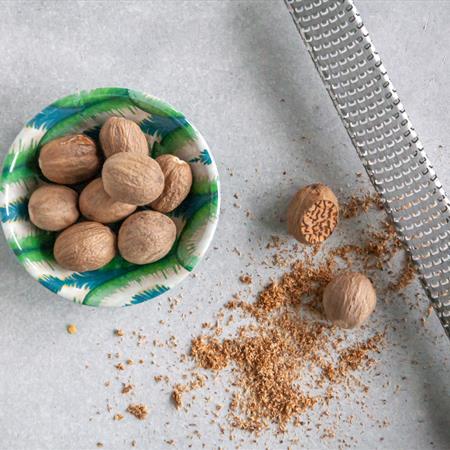
Red Pepper Flakes:
While not always included in Bolognese recipes, adding a pinch of red pepper flakes adds a welcomed heat. The same thing goes for red pepper flakes as with nutmeg—make sure your red pepper flakes are still fresh, since they lose flavor over time. Different brands can vary a lot in terms of quality and spice level. Look for Calabrian chili flakes which come from the Calabria region in southern Italy.
Milk:
Authentic Bolognese recipes call for milk, not heavy cream. Adding milk to the sauce balances the acidity of the tomatoes and helps to tenderize the meat. We recommend using whole milk for the best texture.
Wine:
Use a type of wine you’d like to drink, rather than “cooking wine.” Sauvignon blanc is one of our go-to options for cooking, but Italian Pinot Grigio works perfectly with this recipe, too. Some Bolognese recipes call for red wine, but white wine is more traditional.
Tomatoes:
For the most flavorful Bolognese sauce, try to use Italian-imported plum tomatoes, if possible. Because of their oblong shape, plum tomatoes have a lower water concentration compared to other varieties, making them the best choice for sauce-making. You might think it’s best to use fresh tomatoes, but canned tomatoes are always picked and canned at their peak ripeness, so you don’t have to worry about picking ripe tomatoes. And here’s a pro tip for you: you can use kitchen scissors to chop up the tomatoes right in the can to save yourself some dishes!
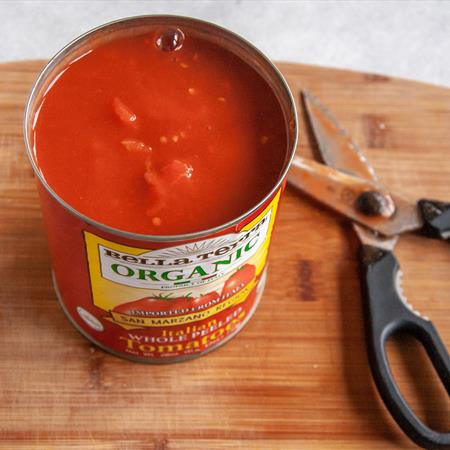
Balsamic Vinegar:
This is an optional ingredient, but if you’re going to add a splash of balsamic, make sure it’s high quality. The best balsamic vinegars are usually imported from Italy, too. Check out this article for more buying tips.
Pasta:
Pasta is too often overlooked, with the sauce being the star of the show. But, the quality of the pasta you use really makes a difference in the final dish. Dried pasta imported from Italy is generally far superior to American products. You can also try fresh pasta from a local market, or even try making your own! If you can find them, long, wide noodles like pappardelle or tagliatelle work best with Bolognese since you need a thick enough noodle to hold up to the thick, meaty sauce.
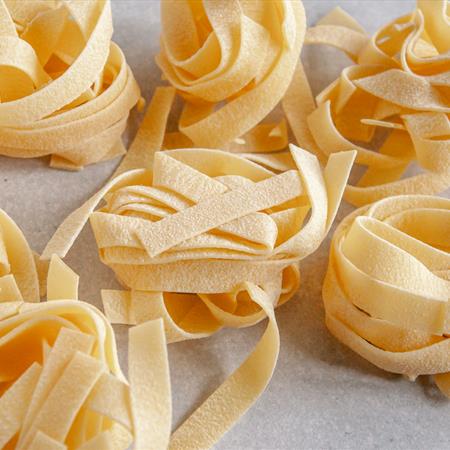
Parmesan:
Real freshly grated Parmesan is the only way to go for this recipe. Pre-grated parmesan products can’t compare to the salty, savory, nutty flavor of real Parmesan cheese. But how do you know if it’s real? Real Parmigiano Reggiano cheese is only produced in Parma, Italy and a few other regions of Italy. So, if it’s real, it will be imported from Italy and bear a distinct stamp on rind to prove it.
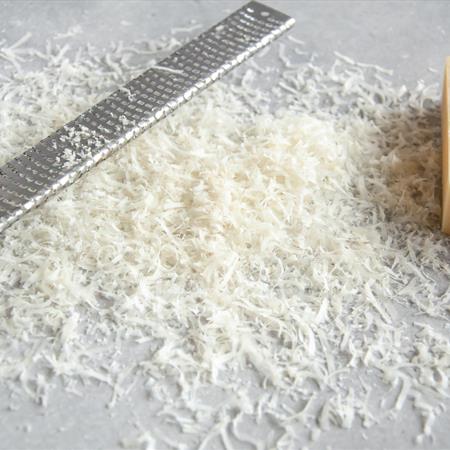
Herbs:
Bolognese isn’t traditionally seasoned with herbs—just nutmeg, salt and pepper. However, garnishing the final dish with a bit of fresh herbs adds brightness that counteracts the richness of the sauce. Oregano, basil, and parsley are common herbs to use when making Italian pasta sauces. These three herbs are sometimes sold together as a “pasta blend.”

Garlic:
Garlic is another ingredient that’s not traditionally used in Bolognese, but we added a touch for our unique take on the dish. Use fresh garlic rather than pre-minced. Pre-minced garlic has too harsh of a flavor.
More Tips & Tricks for Bolognese
Take Your Time
This isn’t a quick and easy weeknight meal recipe. Authentic Bolognese sauce must be simmered for at least 3 hours at a low temperature. Simmering for longer is fine—it will only get better with a longer simmer time, but you can’t really speed up the process by turning up the heat. It really needs the time in order for the flavors to meld together.
Bolognese should typically be simmered uncovered to allow the excess liquid to evaporate and the sauce to thicken. You should check on the sauce often to make sure it’s not bubbling away too quickly. While it should thicken a bit over time, if it evaporates too quickly, it can burn. If it does seem like it’s thickening too quickly, add water or stock as needed to maintain the proper consistency.
On the other hand, if it’s still too thin after 3 hours, you can turn up the heat a bit to a stronger simmer. Then, continue to simmer the sauce until you reach the desired consistency.
Final Touches
When combining the Bolognese sauce with pasta, you don’t want to simply pour the sauce over the pasta. Instead, you want to combine the pasta and sauce into one cohesive dish. This process in Italian is known as mantecare.
It starts with cooking the pasta. You want to cook the pasta just shy of al dente at first because the pasta will continue to cook when you add the sauce. When the pasta is done, drain it, but don’t rinse it! The starch on the pasta helps the sauce to adhere to the pasta and coat the noodles.
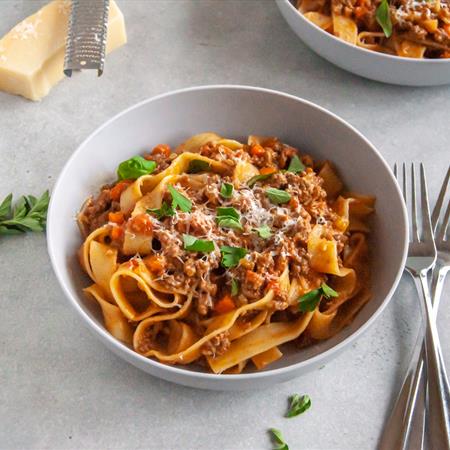
After the pasta is done, combine the pasta portions with the prepared Bolognese sauce in a sauté pan. This is also the point where you’ll add a bit of butter and mix everything together until the sauce is emulsified with the butter and the noodles are all evenly coated in the sauce. Once that happens, you’re finally ready to eat. Garnish your dish with freshly grated Parmesan cheese and some fresh herbs, and buon appetito!
Fresh from the BigOven Kitchen
Bolognese Sauce
Get the Recipe!






